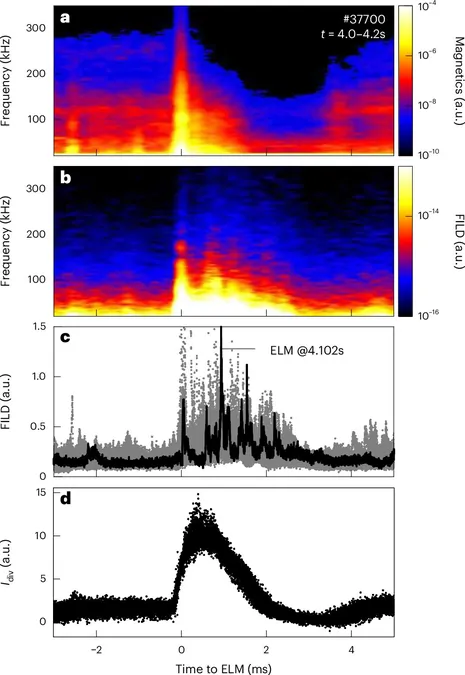
Breakthrough Discovery: Energetic Particles Offer a Game-Changer for Controlling Plasma Flares in Tokamaks!
2025-01-10
Author: Li
Introduction
As the world grapples with the pressing challenge of sustainable energy, nuclear fusion—an energy source that powers the stars—emerges as a beacon of hope. With the potential to provide a clean, virtually limitless energy supply, fusion is increasingly being recognized as a promising candidate to meet global energy demands.
Tokamak Design and Plasma Confinement
At the forefront of fusion research is the tokamak design, which utilizes magnetic fields to confine plasma. Achieving exceptional plasma confinement is essential for developing viable nuclear fusion power plants, and this is the ultimate goal of ITER, the world’s largest tokamak currently being constructed in Cadarache, France.
Challenges: Edge Localized Modes (ELMs)
A critical aspect of plasma confinement is maintaining plasma edge stability. In today's tokamaks, instabilities along the plasma edge, known as Edge Localized Modes (ELMs), can lead to substantial particle and energy losses. These losses resemble solar flares erupting from the sun's edge, posing a significant challenge. Such ELM-induced losses can result in erosion and excessive heat flux, jeopardizing the integrity of plasma-facing components in future fusion reactors.
Role of Energetic Particles
Recent research indicates that energetic particles, specifically suprathermal particles, might hold the key to achieving better control over these ELMs. These particles are crucial for providing momentum and energy in future burning plasmas and must be effectively confined to enable a self-sustaining fusion reaction.
Research Findings and Methodology
An international collaboration has investigated the influence of energetic ions on ELM behavior, utilizing a combination of experimental data, modeling, and simulations to gain insights into this dynamic interaction. Findings from the study, published in the reputable journal *Nature Physics*, offer a groundbreaking perspective on the interplay between energetic ions and ELMs.
Conducted at the ASDEX Upgrade tokamak in Garching, Germany, researchers employed advanced simulations through a hybrid code called MEGA. This code accurately models the complex interactions between ELMs and energetic particles, leading to a deeper understanding of their behavior in tandem.
Key Insights and Implications
Crucially, the results reveal that the structure of ELMs is significantly influenced by the presence of energetic particles, highlighting a resonant energy exchange mechanism between the two. This interaction not only sheds light on the behavior of ELMs as observed through magnetic diagnostics but also enhances our understanding of fast-ion loss phenomena.
Jesús José Domínguez-Palacios Durán, the primary author of the study, likens this discovery to a surfer riding a wave, where the energetic particles leave an imprint on the ELMs as they interact. He notes, "Our findings suggest that energetic particles could function as active actuators in the control of these MHD waves—offering potential optimization strategies for ELM management."
Conclusion: A Significant Step Forward
This pioneering research stands as a significant step forward, offering the first detailed insights into how energetic ions influence ELMs. With implications for the ITER project and other next-generation fusion devices, the expectation of strong energy and momentum exchanges between ELMs and energetic ions may revolutionize the approach to plasma stabilization, marking a monumental advance in nuclear fusion technology!
Stay tuned as this story unfolds; the future of sustainable energy might just depend on it!

 Brasil (PT)
Brasil (PT)
 Canada (EN)
Canada (EN)
 Chile (ES)
Chile (ES)
 Česko (CS)
Česko (CS)
 대한민국 (KO)
대한민국 (KO)
 España (ES)
España (ES)
 France (FR)
France (FR)
 Hong Kong (EN)
Hong Kong (EN)
 Italia (IT)
Italia (IT)
 日本 (JA)
日本 (JA)
 Magyarország (HU)
Magyarország (HU)
 Norge (NO)
Norge (NO)
 Polska (PL)
Polska (PL)
 Schweiz (DE)
Schweiz (DE)
 Singapore (EN)
Singapore (EN)
 Sverige (SV)
Sverige (SV)
 Suomi (FI)
Suomi (FI)
 Türkiye (TR)
Türkiye (TR)
 الإمارات العربية المتحدة (AR)
الإمارات العربية المتحدة (AR)